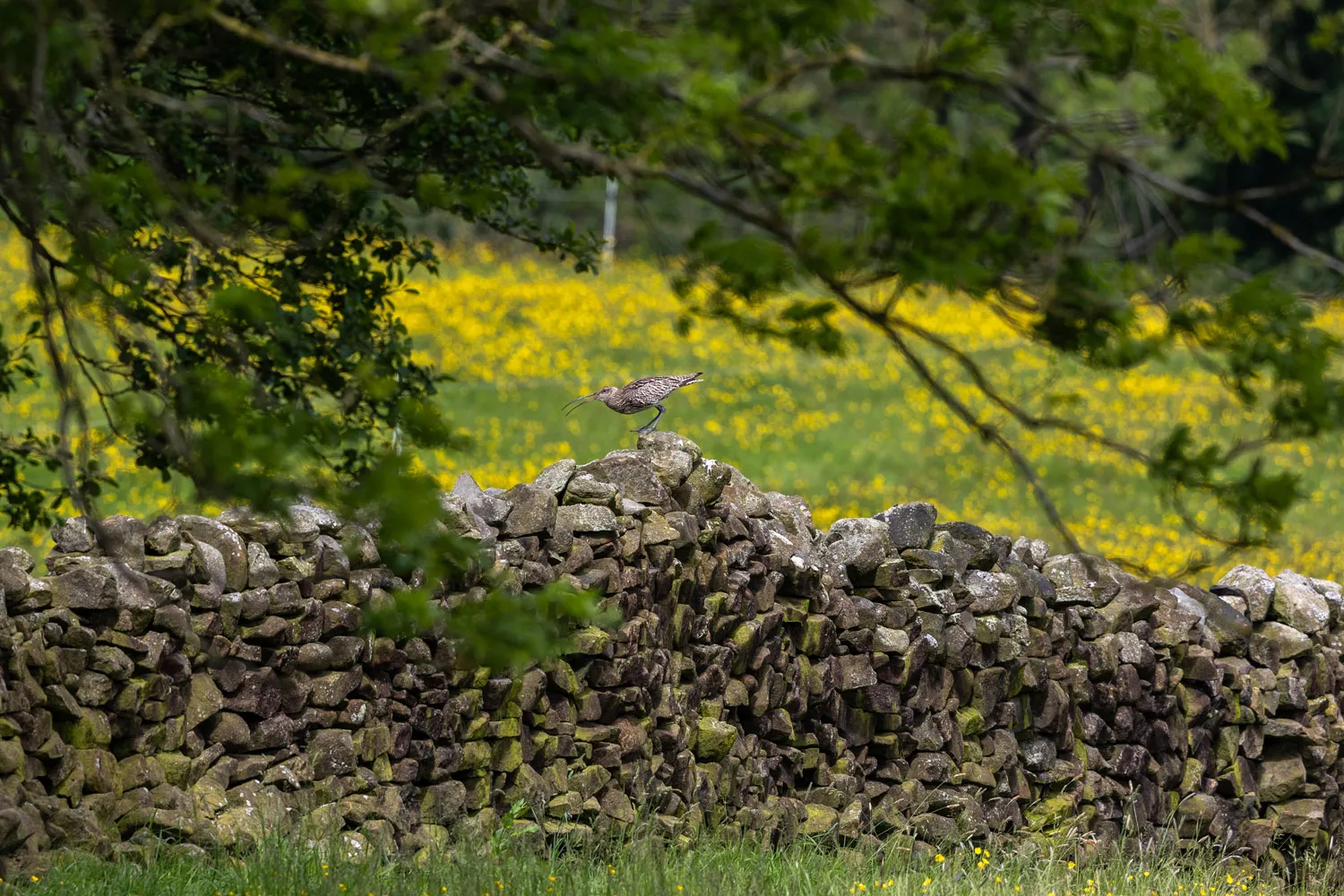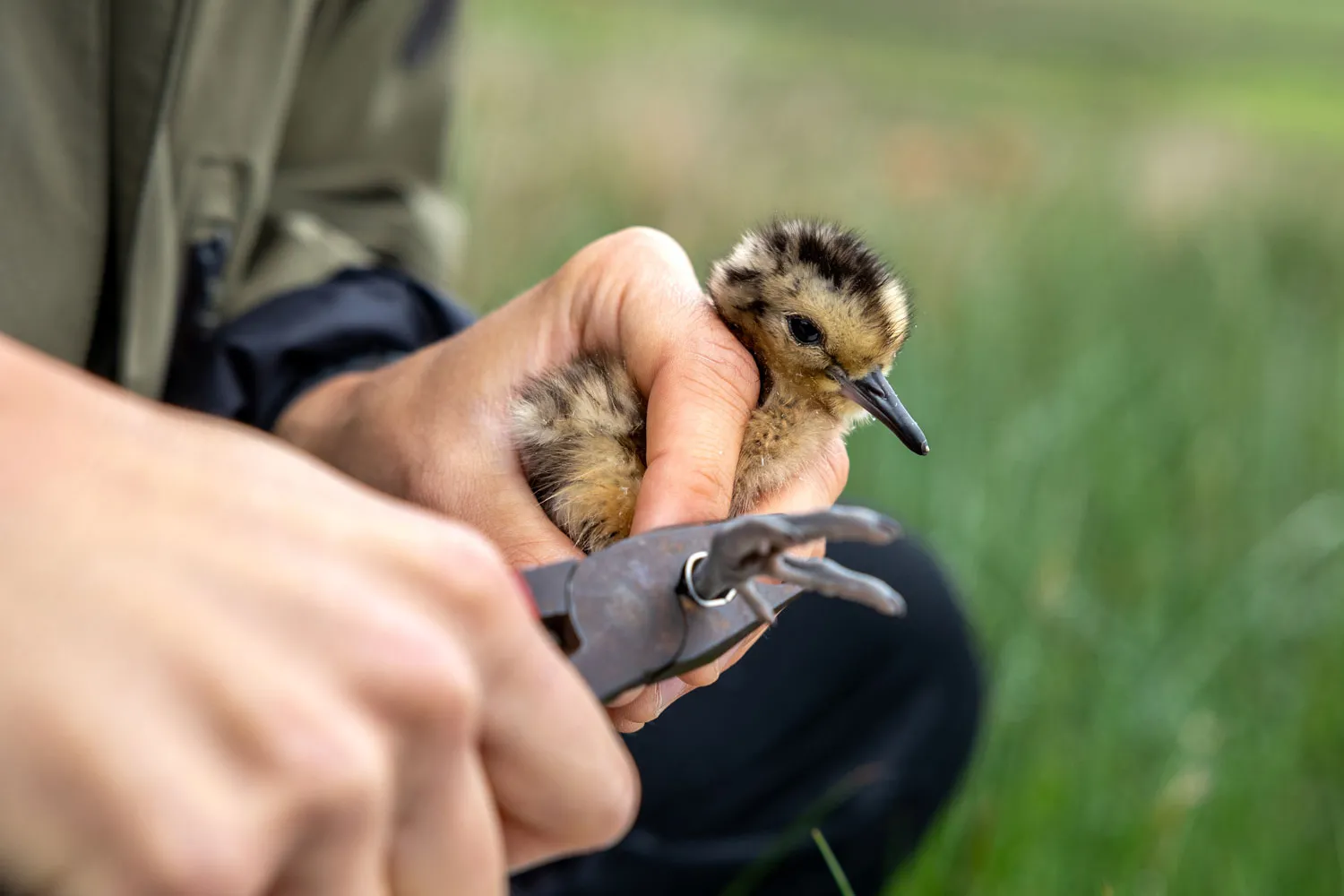Waders in decline
The UK’s upland, grassland and farmland habitats host important populations of breeding waders – for some species, such as Curlew and Oystercatcher, some of the largest populations in all of Europe. However, from their peak numbers in the early part of the 20th century, many of these species are now in trouble.
Results from the Breeding Bird Survey and Bird Atlas 2007-11 highlight the declining populations and range reductions of species such as Lapwing, Curlew, Redshank, Snipe and Oystercatcher across much of the UK. Analyses of these long-term monitoring data, together with species- and habitat-specific research have identified key drivers of these declines:
- Loss and deterioration of breeding habitat as a result of climate change and recently-adopted agricultural practices, such as conversion of traditional meadows to intensive grassland monocultures;
- Reduced productivity (survival of eggs and chicks) because of losses due to agricultural activities, greater predator numbers and increased vulnerability of eggs and chicks to predation in degraded habitat.
Monitoring and scientific evidence will be central in informing policies targeted at improving wader breeding habitat and reducing losses of eggs and chicks in agricultural landscapes, and increasing the resilience of breeding habitats to climate change. Similarly, impartial science will play a key role in identifying the causes of high predator numbers in different landscapes.
Our research aims
Developing realistic strategies to support sustainable, resilient populations of breeding waders needs to be underpinned by monitoring and impartial scientific evidence. In order to enable this, we are:
- Engaging with and supporting a diverse group of stakeholders in monitoring breeding waders;
- Acting as a hub for the collation, communication and dissemination of information on breeding waders;
- Reviewing and synthesising evidence from across stakeholder groups on the causes of change and the effectiveness of conservation interventions;
- Identifying the tools required for supporting sustainable populations of breeding waders in diverse landscapes and sharing these with a range of audiences, so they can be incorporated into land use and conservation policy.
These core objectives are helping us to deliver a strong legacy that will continue engagement, collaboration, science and conservation action for breeding waders into the future.
Supporting Curlew recovery
The Curlew has been described as the UK’s highest bird conservation priority, and previous BTO work indicates that the current population declines are likely to be driven by low breeding productivity.
Current work, being undertaken in collaboration with the Curlew Recovery Partnership as part of the Natural England/BTO Research Partnership, explores the effectiveness of management interventions aimed at increasing Curlew breeding productivity within its rapidly declining populations in central and southern England.
This builds on established regional studies in varying landscapes, including a recent PhD study in the East Anglian Brecks, supported through BTO’s Curlew Appeal. In this grassland- and arable-dominated region, the majority of nest failures (86%) were caused by (primarily nocturnal) predation. Fencing to exclude mammalian nest predators can increase wader nest success, but too few Curlews currently nest within fenced areas in Breckland to produce an observable benefit. Fencing sites containing high densities of nesting Curlews could potentially double the number of chicks hatched each year within the Breckland study area, something that would help to maintain these populations. However, landscape-scale actions to reduce predator impacts on nests and chicks will be needed to maintain breeding numbers within the wider countryside.

BTO has also been working with partners on a Curlew head-starting project in England. Curlew eggs, rescued from military and civilian airfields where the risk of bird-strike means that the nests would otherwise have been destroyed, are hatched and reared in a specialist facility, where they can be ringed and tagged before release into the wild. The tracking component delivered by BTO staff provides a unique insight into the behaviour and survival of young birds and is helping to improve our understanding of head-starting as a conservation tool for Curlew recovery.
BTO Cymru staff have been closely investigating movements and habitat preferences of Welsh breeding Curlew using GPS tags across three sites, in lowland Anglesey, and the uplands of eastern Snowdonia and Denbighshire.
A collaborative approach: the Wader Hub
BTO works with partners from across a broad range of stakeholders, and this collaborative approach plays a key role in delivering effective conservation solutions for the UK’s breeding waders.
- We are evaluating the effectiveness of agri-environment schemes and other conservation management tools for breeding waders, both in the UK and more widely in Europe.
- We are working with partners, from government to game managers, to understand the role of predation in wader population declines.
- We are engaging with and supporting local stakeholder groups in developing monitoring programmes for wader populations at local, regional and national scales.
- We are working to identify the vulnerability of upland waders to climate change and how conservation management can be adapted in response.
BTO’s important role in partnership-working for breeding waders reflects our well-respected position as an organisation delivering robust scientific evidence. This vital position informs sustainable conservation strategies, and enables us to tackle a range of diverse views and potential conflicts with other land management objectives, such as woodland expansion, grouse moor management and catchment-scale flood management.
